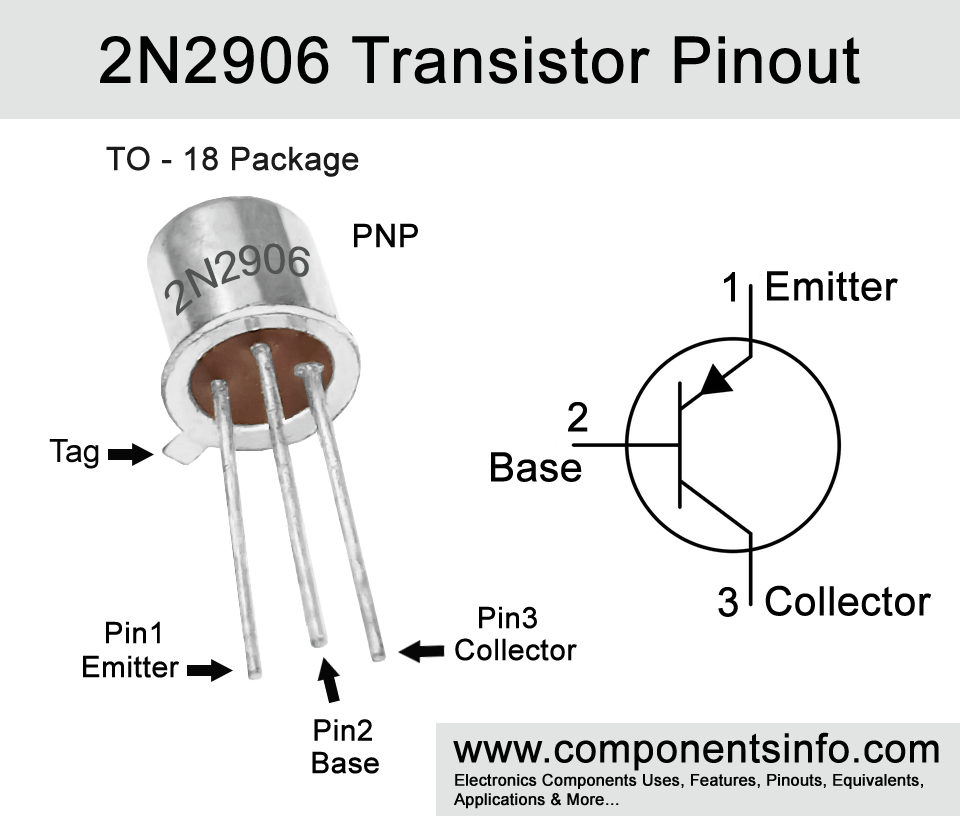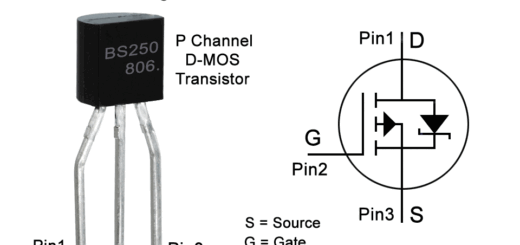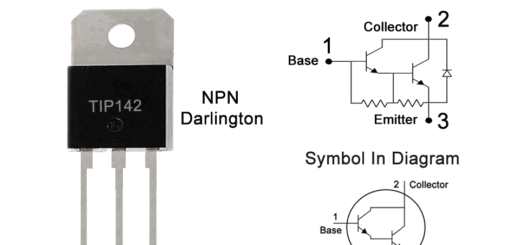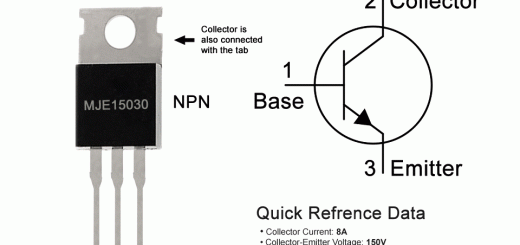2N2906 Transistor Pinout, Equivalent, Applications, Features and Other Important Info
If you are looking for a general purpose PNP small signal transistor that can perform various small signal task in your circuits or design with little bit high temperature capabilities then 2N2906 can be a good candidate. In this post we are going to discuss 2N2906 transistor pinout, equivalent, applications, features and other important info.
Features / Technical Specifications
- Package Type: TO-18
- Transistor Type: PNP
- Max Collector Current(IC): 600mA
- Max Collector-Emitter Voltage (VCE): -40V
- Max Collector-Base Voltage (VCB): -60V
- Max Emitter-Base Voltage (VBE): -5V
- Total Power Dissipation (Pc): 400 Milliwatt
- Max Transition Frequency (fT): 200 MHz
- Minimum & Maximum DC Current Gain (hFE): 20 to 120
- Max Storage, Operating & Junction temperature range: -65 to +150 Centigrade
NPN Complementary:
NPN Complementary of 2N2906 is 2N2222
Replacement and Equivalent
2N2906A, 2N2907, 2N2907A, 2N5763, KSP2907, KTN2907, MPS2907
2N2906 Transistor Explained / Description
2N2906 is a TO-18 package PNP small signal transistor designed to use in high speed switching circuits. A high speed switching circuit is a circuit that requires a transistor that is capable of ON and OFF the load quickly as compared to a normal switching transistor. These types of transistors are mostly used in digital circuits where data transmission in high speed is required. Another use of high speed switching transistors are in audio and RF amplification circuits in which they amplify weak audio and RF signals with very low distortion. Other uses of these transistors are oscillators, instruments, measurement circuits, etc.
2N2906 is also designed to use in Complementary circuits, the complementary circuits are the circuits in which a transistor is connected with its complimentary transistors to perform even better as compared to performing separately.
Looking at the maximum limits and characteristics of the transistor the maximum collector-emitter voltage is -40V, max collector current is -40V, max collector-base voltage is -60V, max emitter-base voltage is -5V, minimum and maximum DC current gain is 20 to 120, transition frequency is 200MHz and total power dissipation is 400mW.
Where We Can Use it & How to Use
The transistor is designed to use in high speed, Audio and RF amplification and complimentary circuits but it is not limited to only these applications and can be used in wide variety of applications. The detailed list of its applications can be found under the Applications heading below.
How to use:
Using procedure of this transistor is same as we use any other BJT transistors by supplying negative voltage at its emitter, connecting load to its collector and using a suitable base resistors to provide required current at its base to control the output.
Applications
High Speed Switching
Switching Loads under 600mA
Radio & RF Applications
Signal Amplification
Darlington Pairs
Complimentary pairs
Audio Amplifier
And Many Other General Purpose Applications
Safe Operating Guidelines
To safely operate the transistor it is recommended to not use it on its absolute maximum ratings and always stay 20% below from its max ratings. The maximum collector-emitter voltage is -40V therefore do not drive load of more than 32V max, the maximum collector current is 600mA therefore do not drive load of more than 480mA, Use a suitable heatsink if required and always store or operate at temperatures above -65°C and below +150°C.
Datasheet
To Download the datasheet just copy and paste the below link in your browser.
https://z3d9b7u8.stackpathcdn.com/pdf-down/2/N/2/2N2906_PhilipsSemiconductors.pdf



